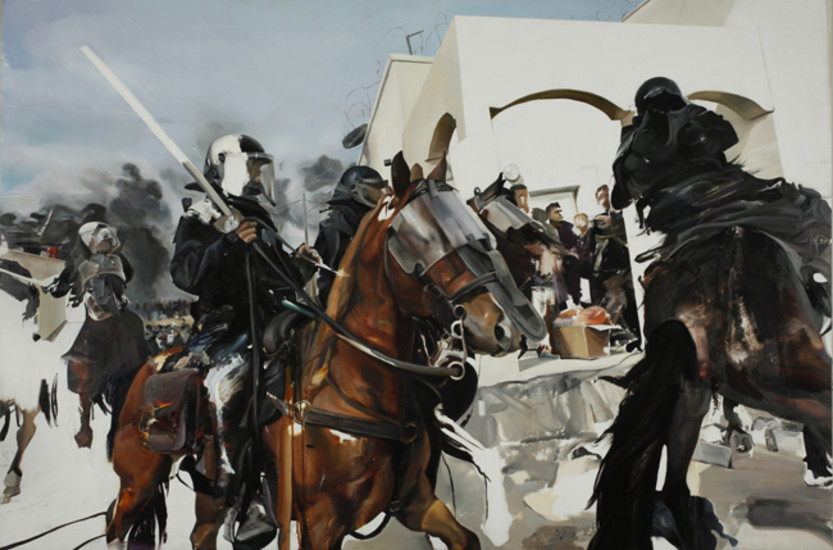A Witch Who Ran Out of Horses
Neta Harari
Neta Harari’s paintings, despite harboring a violence in them, do not ask to be interpreted along the lines of news imagery so familiar to the eye, nor according to the general codes prevalent in Israeli society, but seek to be read as reflections of a primeval power struggle. Her works are an invitation to enter a sealed room, to travel to the heart of the event but also to witness the expulsion from it.
Harari’s paintings deconstruct the image of the home, and present the momentous peaks of a struggle through the complexity of a sacrifier–scarified relationship. The violent actions are charged with meanings that overstep their original ones; power hubs and blind spots are unveiled as a transgresive, feminine statement gradually comes to light. Her works challenge the limits of an existing order while exhibiting an awareness of its necessity. They stand on the edge of a void.
The exhibition is titled after a poem by Israeli poet Raquel Chalfi, and like it seeks that very seam on the edge of reality. Harari embraces Chalfi’s witch and clings to her in her swift flight above the depths of psyche, thus turning difficulty into an exuberant spectacle of passion, motion and a pain that asks as much to erupt as to give in.





